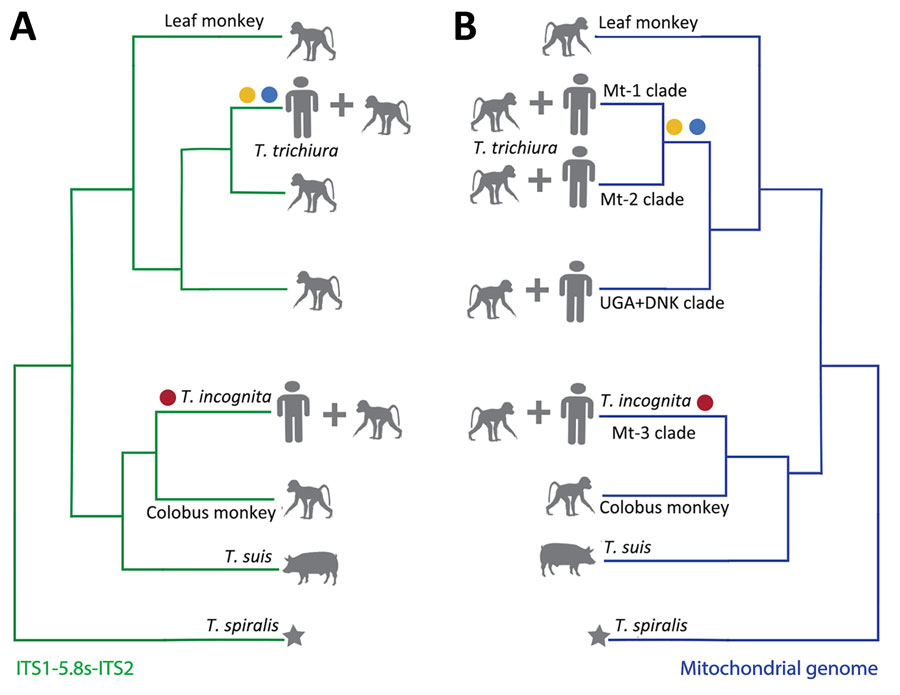Volume 31, Number 1—January 2025
Research
Trichuriasis in Human Patients from Côte d’Ivoire Caused by Novel Species Trichuris incognita with Low Sensitivity to Albendazole/Ivermectin Combination Treatment
Figure 5

Figure 5. Schematic of phylogenetic relationships of Trichuris spp. infecting humans and nonhuman primates adapted from previously published studies. Relationships are indicated for the ribosomal ITS1-5.8S-ITS2 region (A) and the mitochondrial genome (B). Two major clades of Trichuris in the ribosomal DNA and mitochondrial DNA phylogenies infected both humans and nonhuman primates. Yellow circle indicates T. trichiura from Pemba Island, blue indicates T. trichiura from Laos, and red circle indicates T. incognita from Côte d’Ivoire. Pig-derived T. suis is also included in the tree as a reference. Star indicates Trichinella spiralis, used as an outgroup.
1Current affiliation: Kwantlen Polytechnic University, Surrey, British Columbia, Canada.
Page created: November 14, 2024
Page updated: December 22, 2024
Page reviewed: December 22, 2024
The conclusions, findings, and opinions expressed by authors contributing to this journal do not necessarily reflect the official position of the U.S. Department of Health and Human Services, the Public Health Service, the Centers for Disease Control and Prevention, or the authors' affiliated institutions. Use of trade names is for identification only and does not imply endorsement by any of the groups named above.